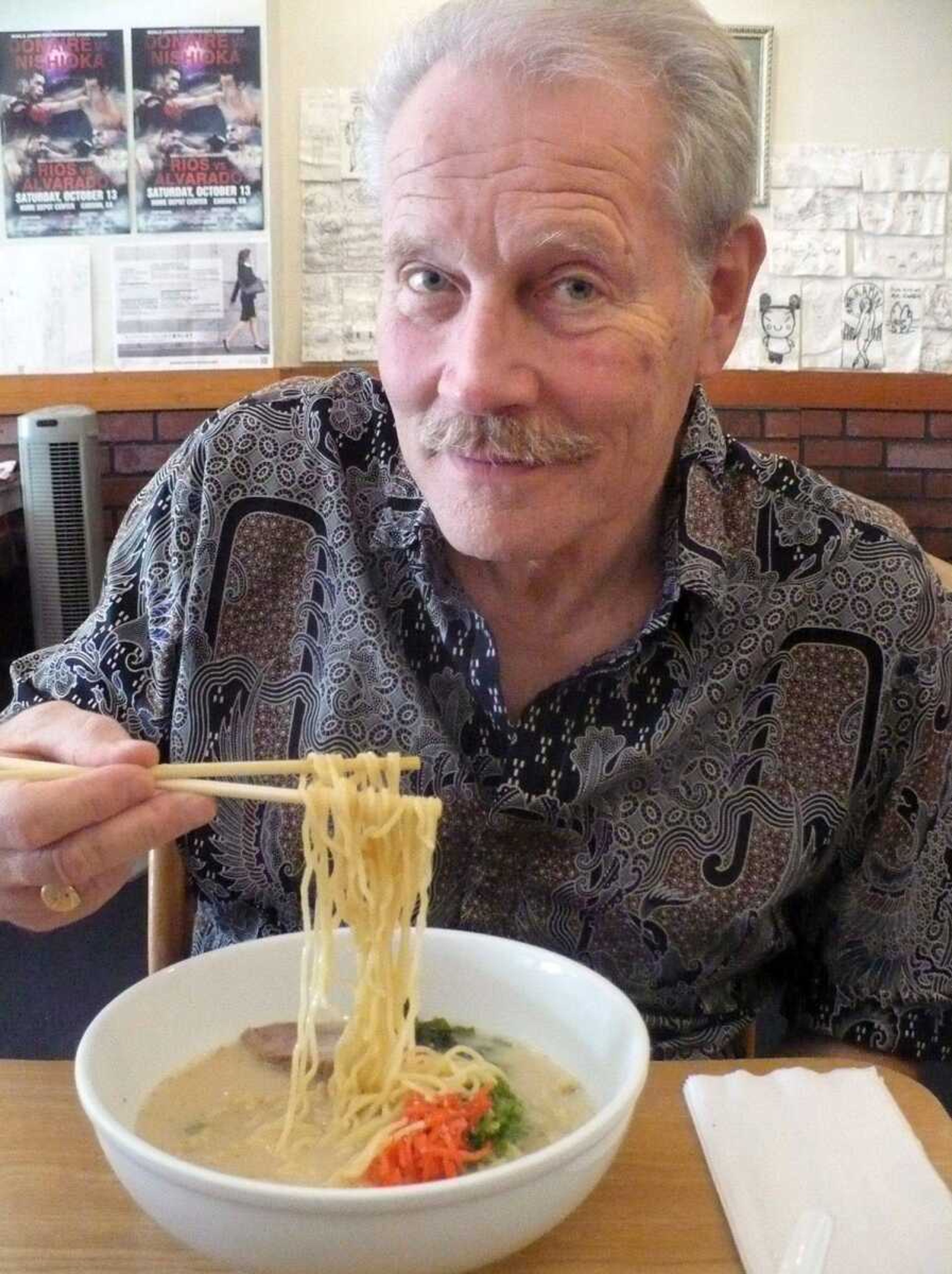Ramen - food for the college student
In Cape Girardeau and other college towns, autumn brings evidence that university students have returned to the city. It's harder to find a place to park, stores are more crowded, the neighborhoods near the campus aren't as quiet as they were over the summer, and local grocers are hard-pressed to keep shelves stocked with ramen noodles...
In Cape Girardeau and other college towns, autumn brings evidence that university students have returned to the city. It's harder to find a place to park, stores are more crowded, the neighborhoods near the campus aren't as quiet as they were over the summer, and local grocers are hard-pressed to keep shelves stocked with ramen noodles.
Ramen noodles have long been a staple of the college student's diet, mainly because they're quick and easy to prepare and are dirt cheap, not to mention pretty darn tasty too. On many campuses, where subcultures are already rife, the ubiquitous noodles have spawned a subculture of their own.
Now, to be sure, the college culinary scene has changed since I was a freshman, especially for those living in residence halls. Back then so-called mystery meat (a mystery best left unsolved) was on the menu regularly and we never saw the likes of Maple Dijon Pork Loin, Chicken Marsala or Cauliflower Biryani, dishes all available to incoming students dining on the Southeast Missouri State University campus the first day of classes this semester.
Still, college students -- especially when hurried, low on cash or cooking for themselves -- consume lots of the nearly 100 billion servings of ramen eaten annually around the world, though it turns out that even they can't hold a candle to the Japanese.
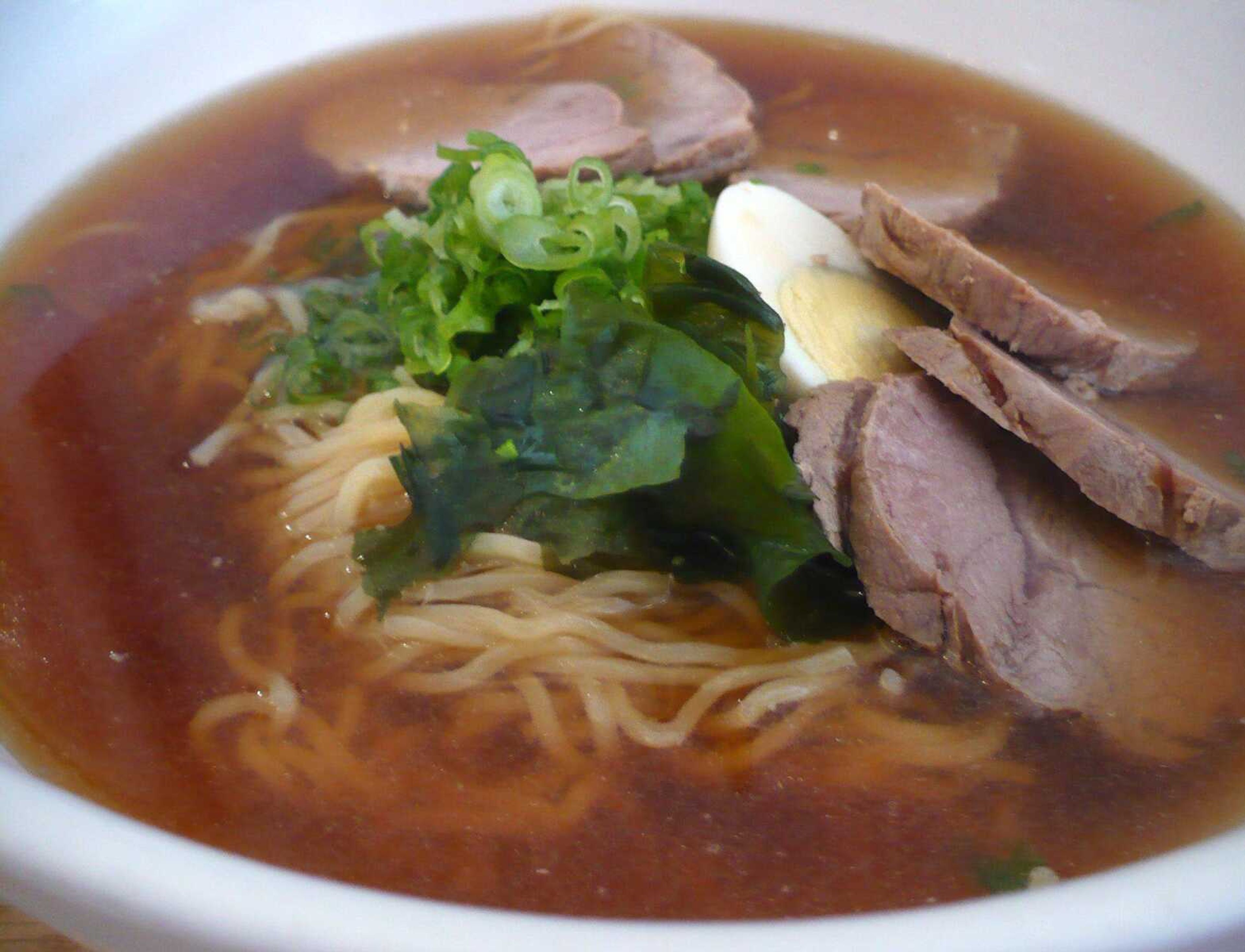
In Japan, though sometimes called gakusei ryori ("student cuisine"), ramen is more than a cheap cup of noodle soup. It is the national dish, a cultural icon, and a window into the country's worldview. As the chef in the movie "Ramen Girl" tells his apprentice: "A bowl of ramen is a self-contained universe, with life from the sea, the mountains, and the earth, all existing in perfect harmony."
Though the Japanese eat plenty of instant ramen, naming it the greatest invention of the 20th century in a recent poll, it is freshly made ramen served in some 200,000 ramenyas (ramen shops) all over the country that is their real passion. In Tokyo diners happily spend upward of $100 on the gourmet version served at Fujimaki Gekijyo restaurant. No wonder the island is home to not one, but two ramen museums and a ramen theme park. Nor is it surprising that when the Japanese astronaut Soichi Noguchi traveled to the space shuttle he took ramen with him.
Ironically, the Japanese did not invent ramen, instead borrowing it, in this case from China, and perfecting it, much as they have the automobile, the camera, and even sushi. But though the Chinese had a thousand-year head start on the Japanese in the noodle business, the omnipresent instant variety was actually invented in Japan, albeit by a native of Taiwan. He was Momofuku Ando, who, using a secondhand noodle-making machine, a wok and a watering can, concocted his first batch in a shack behind his house outside Osaka back in 1958.
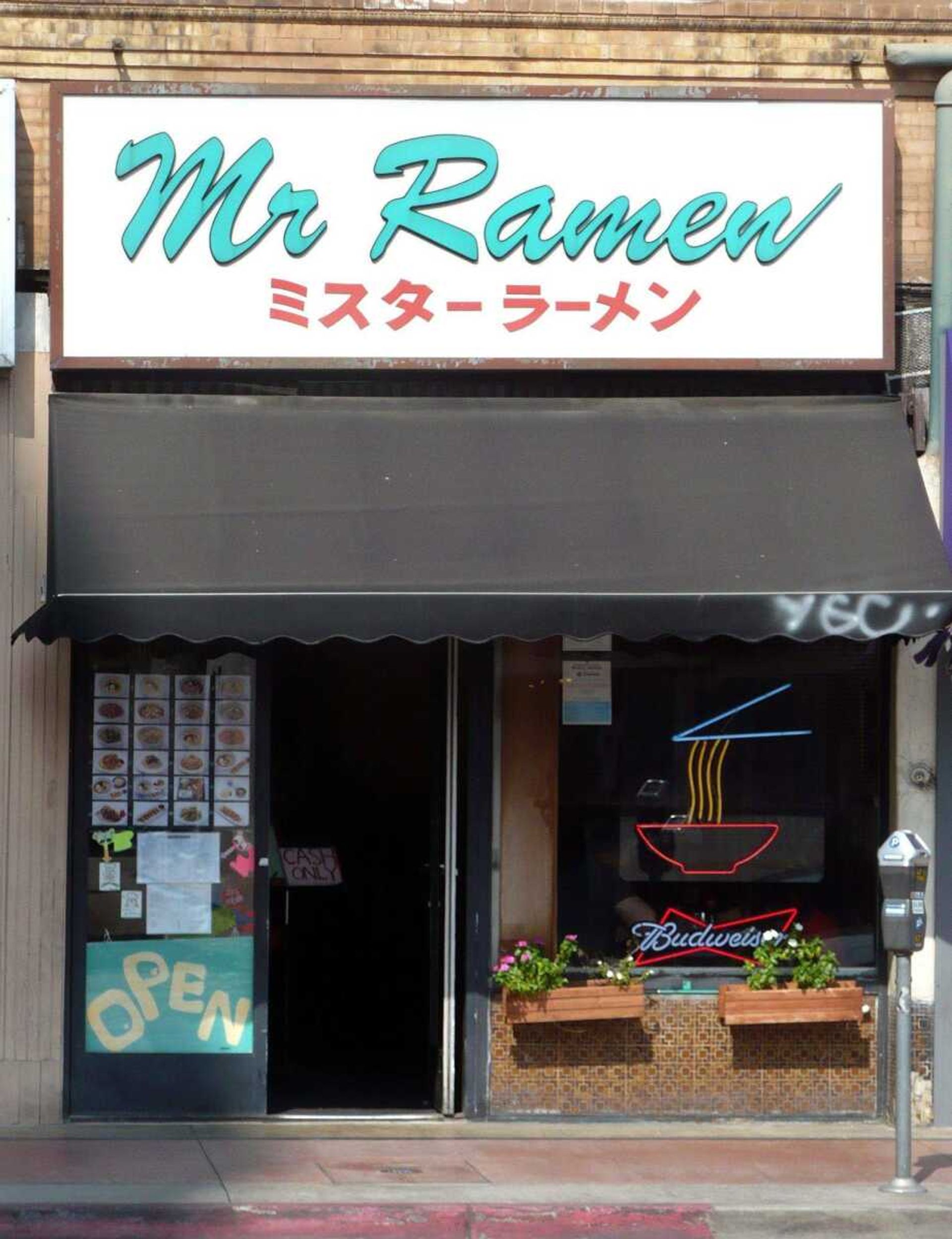
He died a wealthy man at the age of 96. And though nutritionists argue, with justification, that ramen noodles are not exactly health food, Ando attributed his longevity to just two things: playing golf and eating ramen noodles nearly every day.
Coconut Curry Shrimp Ramen
This recipe, adapted from Women's Day magazine, not only elevates ramen but by adding nourishing ingredients and reducing the use of sodium-heavy seasoning, makes it healthier, too.
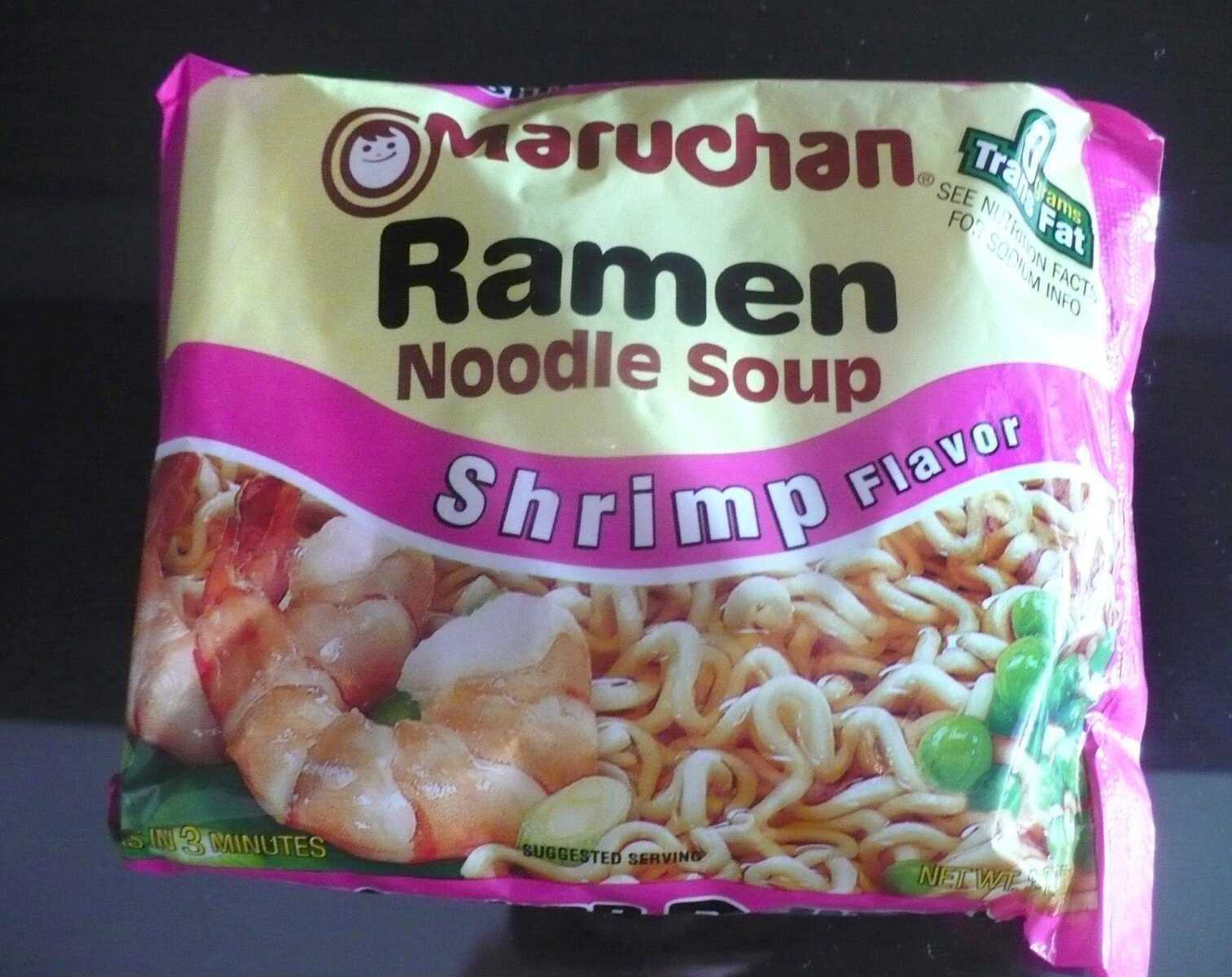
2 packages (3 ounces each) shrimp flavored ramen noodles soup mix
1/2 cup light coconut milk
1/3 cup creamy peanut butter
2 tablespoons lime juice
1/4 teaspoon red pepper flakes
1 pound cooked shrimp, cleaned, peeled and deveined
1/2 seedless cucumber thinly cut into half-moons
4 green onions diagonally sliced
1/3 cup peanuts
lime wedges
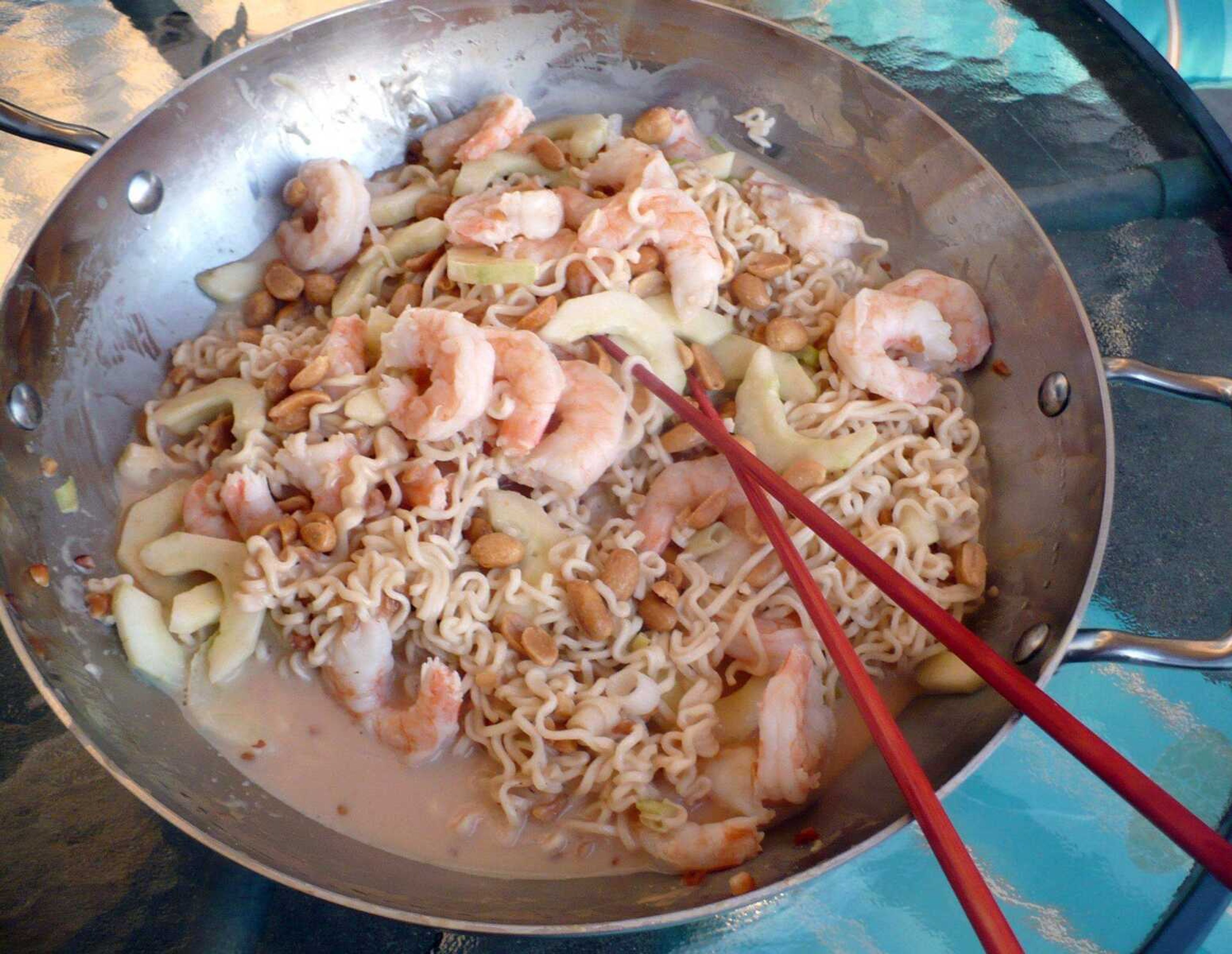
Break noodles into four sections and immerse in boiling water. Cover and let stand five minutes. Meanwhile, blend together coconut milk, peanut butter, lime juice, red pepper and one packet ramen seasoning. Drain noodles, add to dressing along with shrimp, cucumber and green onions and toss to combine. Scatter peanuts on top and garnish with lime wedges.
Tom Harte's book, "Stirring Words," is available at local bookstores. A Harte Appetite airs Fridays 8:49 a.m. on KRCU, 90.9 FM. Contact Tom at semissourian.com or at the Southeast Missourian, P.O. Box 699, Cape Girardeau, MO 63702-0699.
Connect with the Southeast Missourian Newsroom:
For corrections to this story or other insights for the editor, click here. To submit a letter to the editor, click here. To learn about the Southeast Missourian’s AI Policy, click here.


